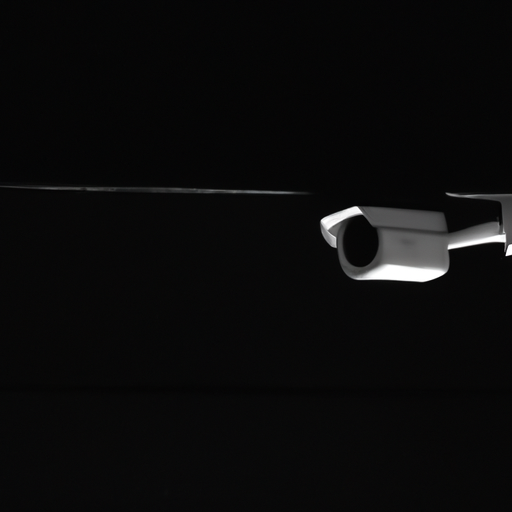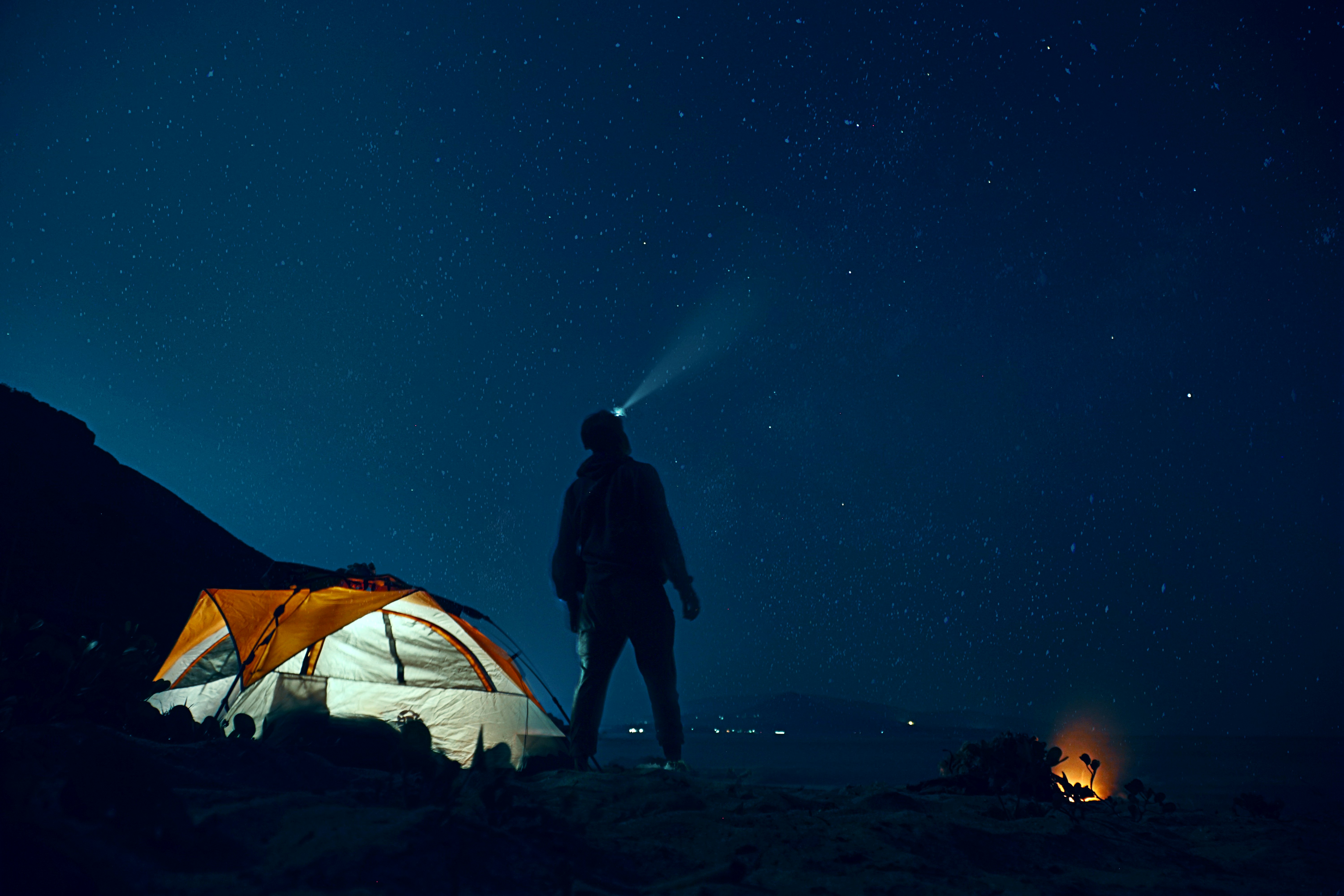
Have you ever wondered if security cameras are able to function effectively in the dark or low-light situations? In this article, we will explore the capabilities of security cameras in these challenging conditions. You’ll learn about the different types of cameras available, such as night vision and infrared cameras, and how they can provide clear images even in darkness. Additionally, we’ll discuss the importance of proper lighting and how it can enhance the performance of security cameras. So, keep reading to find out more about the fascinating world of security camera technology in low-light conditions!
This image is property of images.unsplash.com.
How Security Cameras Function in the Dark or Low-light Conditions
Security cameras play a vital role in monitoring and protecting our surroundings. Whether it is for home security or surveillance in commercial spaces, these cameras provide us with a sense of safety and peace of mind. However, there is a common question that arises – can security cameras work in the dark or low-light conditions? In this article, we will delve into the workings of security cameras in these challenging environments and explore the various technologies that make it possible.
The Role of Infrared Technology
When it comes to capturing images in the dark or low-light conditions, one technology stands out – Infrared (IR). Infrared light is a form of light that is invisible to our naked eye but is detectable by cameras equipped with IR sensors. Let’s explore how this technology enables security cameras to function effectively in such conditions.
Understanding Infrared Light
Infrared light exists in the electromagnetic spectrum beyond visible light, with longer wavelengths. While we cannot see it, many objects emit or reflect infrared radiation. This radiation is captured by IR sensors in cameras and converted into a visible image for us to see.
How Infrared Sensors Work
Infrared sensors are an integral part of security cameras designed for low-light conditions. These sensors can detect infrared radiation emitted or reflected by objects, allowing the camera to capture images even in complete darkness. The camera’s image sensor is typically sensitive to both visible light and infrared radiation, enabling it to produce clear images day or night.
Benefits of Infrared Technology for Security Cameras
Infrared technology offers several benefits for security cameras operating in low-light conditions. Firstly, it allows cameras to capture images in complete darkness, ensuring continuous surveillance regardless of the time of day. This is particularly crucial for areas that require constant monitoring, such as parking lots or high-security locations.
Secondly, infrared technology eliminates the need for additional lighting sources, reducing costs and simplifying installation. By relying on the natural or ambient infrared radiation from objects, infrared cameras can function without any visible light source, ensuring discreet surveillance.
Thirdly, infrared technology enhances image clarity in low-light conditions. The ability to detect infrared radiation helps overcome challenges like noise and graininess that often accompany images captured under low-light environments. This ensures that the captured footage is of high quality and usable for identification or evidence purposes.
The Importance of Sensitivity
While infrared technology plays a significant role in enabling security cameras to operate in low-light conditions, sensitivity is equally crucial. Let’s explore why sensitivity is vital and how it contributes to capturing clear images in the dark.
Explaining Sensitivity Levels
In the context of security cameras, sensitivity refers to the camera’s ability to capture and process low levels of light. It is measured in lux, with lower lux values indicating higher sensitivity. A camera with high sensitivity can capture usable images in extremely dim environments.
When selecting a security camera for low-light or dark conditions, it is important to consider its sensitivity level. A camera with low sensitivity may struggle to capture clear images in challenging lighting situations, while one with high sensitivity excels in these conditions.
How High Sensitivity Helps in Low-light Conditions
Cameras with high sensitivity levels can capture more light, resulting in brighter and clearer images in low-light or dark conditions. This ensures that the camera can detect and record important details, such as facial features or identifying characteristics, even when visibility is compromised.
Higher sensitivity also enables security cameras to capture images at faster shutter speeds, reducing motion blur. This is particularly crucial for areas with moving objects or people, allowing for accurate surveillance and minimizing the chance of missing crucial events.
Determining Adequate Sensitivity for Dark Surveillance
Determining the appropriate sensitivity level for dark surveillance depends on several factors. The specific environment, the distance between the camera and the target area, and the desired image quality all play a role in determining the required sensitivity.
For example, a camera placed in a dimly lit room may require lower sensitivity compared to one monitoring a large outdoor area. It is important to consult with experts or refer to camera specifications to ensure you select a camera with sufficient sensitivity for your specific surveillance needs.
This image is property of images.unsplash.com.
The Different Types of Low-light Cameras
Security cameras come in various types, each designed to cater to specific low-light or dark surveillance requirements. Let’s explore the three main types of low-light cameras – Day/Night cameras, IR cameras, and Thermal cameras.
Day/Night Cameras
Day/Night cameras are versatile cameras that can seamlessly transition between color and black-and-white mode based on the amount of light present. During daylight or well-lit conditions, these cameras capture images in color. As light levels decrease, they switch to black-and-white mode to enhance image visibility.
To facilitate this transition, Day/Night cameras are equipped with either mechanical or electronic IR cut filters. These filters block infrared light during the day to capture accurate colors. However, when the light levels drop, these filters are removed or disabled, allowing the camera to capture infrared radiation and produce clear black-and-white images.
Day/Night cameras provide enhanced image quality in various lighting conditions, ensuring accurate monitoring and surveillance regardless of light levels.
IR Cameras
Infrared (IR) cameras, also known as night vision cameras, are specifically designed to capture images in low-light or dark environments. These cameras utilize built-in infrared LED illuminators to emit infrared light, illuminating the scene and allowing the camera to capture clear images even in complete darkness.
IR cameras are available in various types, including short-range and long-range options. Short-range IR cameras are suitable for monitoring small areas or shorter distances, while long-range IR cameras use advanced infrared technology to capture clear images over longer distances.
The effectiveness of IR cameras can vary based on the distance and the number of infrared illuminators. For optimal results, it is crucial to consider the specific requirements of the surveillance area and select the appropriate IR camera accordingly.
Thermal Cameras
Thermal cameras, also known as infrared cameras, work based on the detection of heat signatures emitted by objects. These cameras do not rely on visible light but rather capture the thermal energy emitted by objects and convert it into an image based on their temperature differences.
Thermal cameras are particularly useful in situations where visibility is extremely limited or non-existent. They can effectively monitor areas in complete darkness, through smoke, fog, or other challenging environmental conditions. However, it is important to note that thermal cameras are limited in their ability to provide fine details or color information, as their primary focus is on detecting heat signatures.
Thermal cameras find applications in various industries, including security, firefighting, and search and rescue operations, where identifying heat sources or anomalies is critical for ensuring safety.
Factors to Consider for Optimal Dark/Low-light Surveillance
While the advancements in security camera technology have made it easier to capture images in dark or low-light conditions, several factors need to be considered to ensure optimal surveillance. Let’s explore some of these factors:
Selecting the Right Camera Type
As discussed earlier, different types of cameras are designed to cater to specific low-light conditions. It is important to carefully evaluate your surveillance requirements and select the appropriate camera type based on factors such as the level of darkness, the size of the area to be monitored, and the desired image quality.
Positioning and Angle of Cameras
Proper positioning and angling of cameras are crucial for optimal surveillance in dark or low-light conditions. Placement in areas with maximum visibility and coverage ensures that the camera captures important details and minimizes blind spots. It is important to consider factors such as distance, lighting sources, and potential obstructions when determining the camera’s position.
Using Additional Lighting Solutions
While many low-light cameras are equipped to function without additional lighting sources, some situations may require supplemental lighting. Depending on the specific environment, options such as LED floodlights or infrared illuminators can enhance visibility and ensure clearer images.
This image is property of images.unsplash.com.
Overcoming Challenges in Dark/Low-light Surveillance
Despite the advancements in technology, there are still certain challenges associated with dark or low-light surveillance. Addressing these challenges is crucial to ensure effective monitoring and capture of usable footage. Let’s explore some strategies to overcome these challenges:
Minimizing Noise and Graininess
Low-light conditions often result in images with increased noise or graininess. To mitigate this, selecting cameras with higher sensitivity levels and noise reduction capabilities is important. Additionally, minimizing the camera’s exposure time and utilizing image enhancement techniques can help improve image quality in low-light situations.
Maximizing the Field of View
To maximize the effectiveness of surveillance in dark or low-light conditions, it is essential to optimize the camera’s field of view. This involves proper placement, angling, and utilizing wide-angle lenses to capture as much area as possible. This ensures that important details are not missed, even in challenging lighting environments.
Choosing the Appropriate Lens
The lens of a camera plays a significant role in determining image quality in low-light conditions. Opt for lenses with wider apertures (lower f-stop numbers) as they allow more light to reach the camera’s sensor, resulting in brighter images. Additionally, lenses with higher optical quality and low distortion contribute to overall image clarity.
Conclusion
The advancements in security camera technology have revolutionized surveillance capabilities, enabling cameras to operate effectively in dark or low-light conditions. Infrared technology, combined with high sensitivity levels, ensures that cameras can capture clear images and provide continuous surveillance regardless of lighting challenges.
It is crucial to select the appropriate camera type based on specific surveillance requirements, considering factors such as distance, lighting conditions, and desired image quality. Proper positioning, additional lighting solutions, and optimization of the camera’s field of view are also important considerations for effective dark or low-light surveillance.
When choosing a security camera for your specific needs, consider the capabilities of each technology discussed in this article. By understanding how these technologies work and their respective benefits and limitations, you can make an informed decision and ensure optimal surveillance in dark or low-light conditions.
Embrace the advancements in security camera technology, and rest assured knowing that effective surveillance is possible, even in the darkest of environments.



